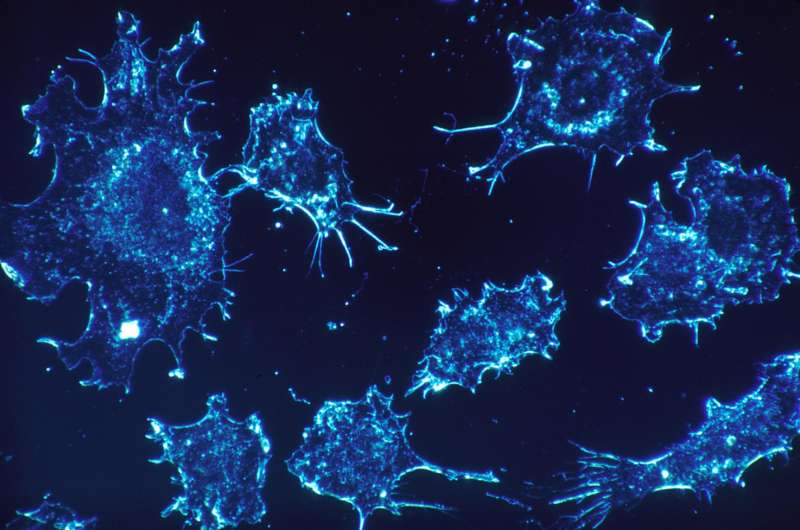Insights into how brain cancer evades the immune system

Glioblastoma—a universally fatal form of brain cancer—is known for its ability to hijack immune checkpoints and evade detection and destruction by the body's immune defenses. But many of the details underlying this feat remain unknown. A new study by investigators from Brigham and Women's Hospital finds that some types of glioblastoma tumors may be able to shed extracellular vesicles (EVs)—small packages of biomaterial—that can help to suppress the body's ability to mount an immune response against the tumor. In addition, the team detected DNA levels from these EVs in blood samples from patients with glioblastoma, suggesting that they could potentially serve as a biomarker of the disease. The team's results are published online this week in Science Advances.
"This is the first time that anyone has observed that immune checkpoints can operate through extracellular vesicles and not just through the cell surface," said co-corresponding author Sean Lawler, Ph.D., of the BWH Department of Neurosurgery. "This is a new concept, suggesting that these vesicles can work more distantly from the tumor cells."
Immune checkpoint inhibitors are already in the clinic and in clinical trials for glioblastoma, but challenges remain. The current study identifies a new mechanism through which tumor cells may be able to suppress the activation of T cells, which have the ability to attack cancer cells. When tumors shed EVs, the vesicles can contain biological materials—including DNA and RNA—that can help tumor cells thrive. In the current study, researchers found that EVs derived from glioblastoma stem-like cells contained PDL-1—a key component that tumor cells can use to deactivate T cells, protecting themselves from detection.
The research team then analyzed blood samples collected from healthy people and from patients with glioblastoma. They found that 14 of 21 patients tested showed enrichment of PDL-1 DNA in isolated EVs. They also correlated DNA abundance with glioblastoma tumor volume, finding a significant correlation between PDL-1 DNA abundance and tumor size, for tumors up to 60 cubic centimeters.
The authors acknowledge that due to the small sample size, follow up studies are needed to determine if their results are reproducible and if PDL-1 DNA on EVs can provide a viable biomarker for glioblastoma. They are continuing to follow up on these findings in the lab.
More information: Ricklefs, FL et al. "Immune evasion mediated by PD-L1 on glioblastoma-derived extracellular vesicles" Science Advances DOI: 10.1126/sciadv.aar2766 , advances.sciencemag.org/content/4/3/eaar2766

















